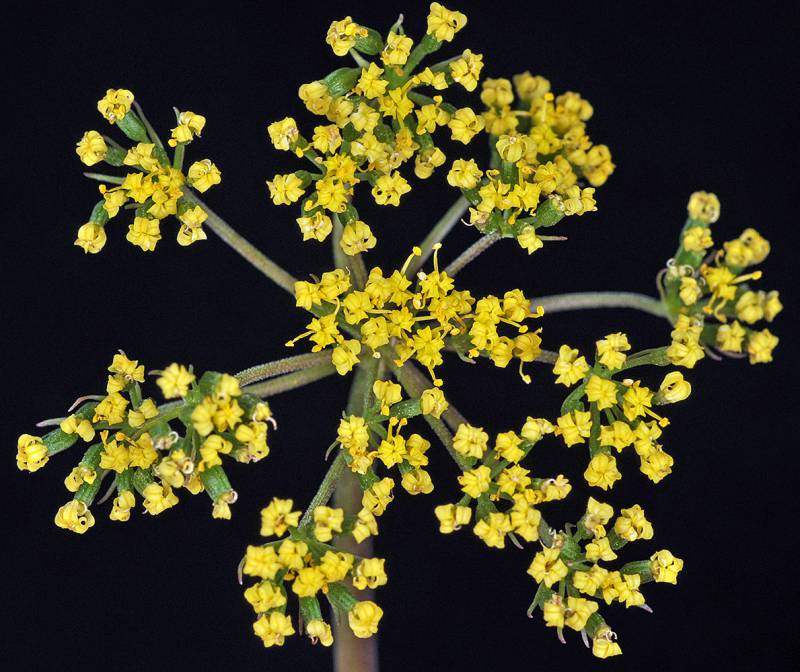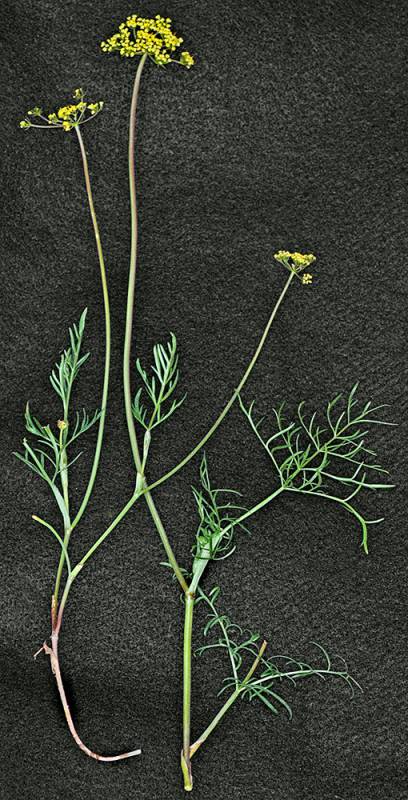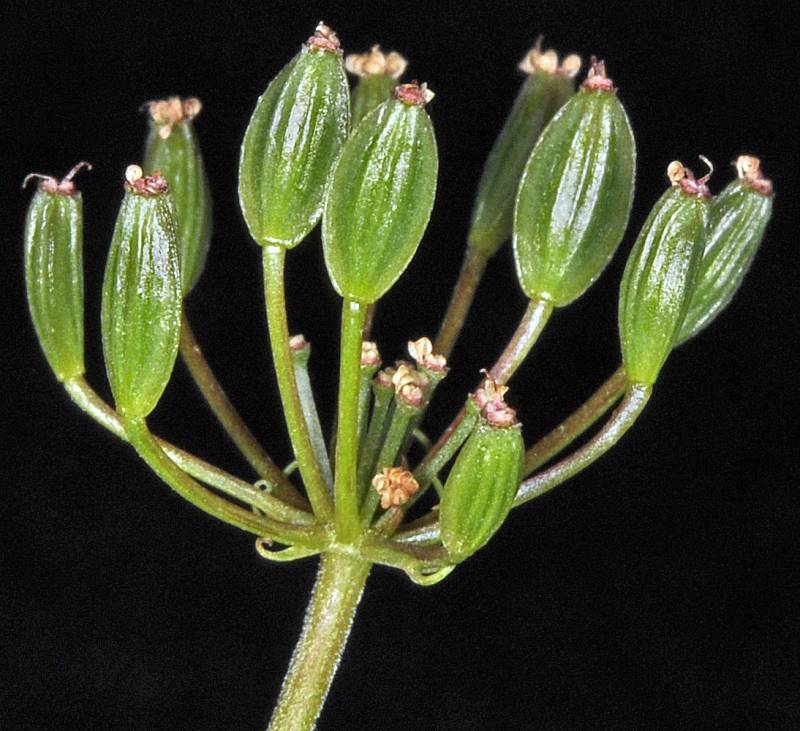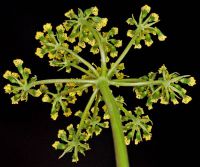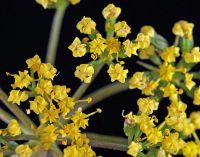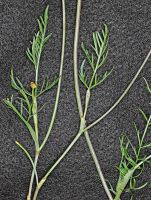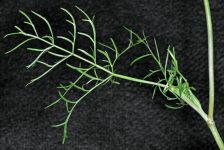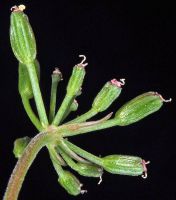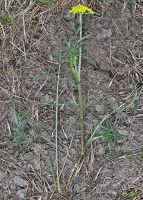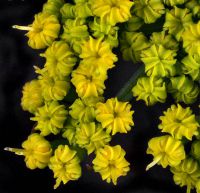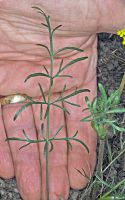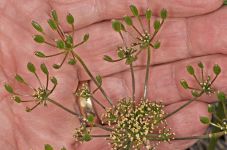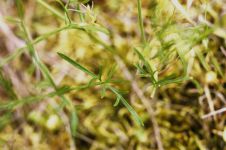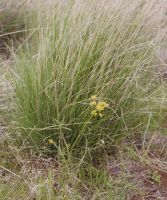Distribution: Occurring east of the Cascades crest in the southeastern counties in Washington; southeastern Washington to the canyons of the Snake and lower Salmon Rivers in eastern Oregon and western Idaho.
Habitat: Open slopes in grasslands, on rocky or fine-textured, loess-derived soils, from valleys to the montane.
Flowers: April-May
Origin: Native
Growth Duration: Perennial
Conservation Status: Threatened in Washington (WANHP)
Pollination: Bees, flies, butterflies, beetles, wasps
Sparingly-branched perennial from a short taproot, 2-7 dm. tall.
Leaves cauline and basal, irregularly pinnately dissected into unequal narrow segments up to 1 cm. long. Taproot short, tuberous-thickened or with 2 or more globose-thickened portions.
Inflorescence of compound umbels, the rays 3-7 cm. long at maturity; involucre none; involucel of inconspicuous, narrow bractlets; calyx teeth obsolete, flowers yellow; pedicels 4-10 mm. long.
Fruit glabrous, elliptic, 5-8 mm. long, the lateral wings well-developed, but barely as wide as the body.
Publication: Bull. Torrey Bot. Club 70: 59. 1943.
PNW Herbaria: Specimen records of Lomatium rollinsii in the Consortium of Pacific Northwest Herbaria database
WA Flora Checklist: Lomatium rollinsii checklist entry
OregonFlora: Lomatium rollinsii information
E-Flora BC: Lomatium rollinsii atlas page
CalPhotos: Lomatium rollinsii photos

